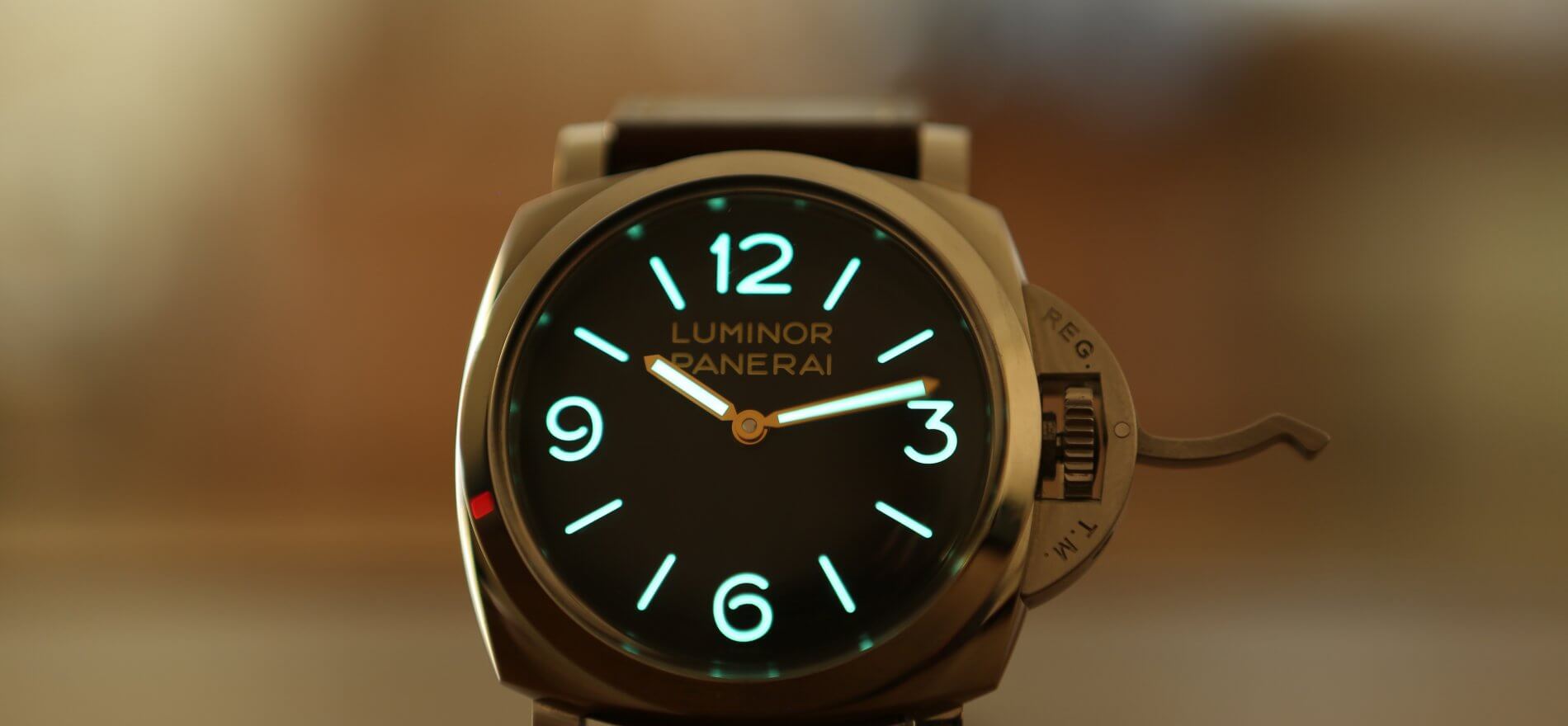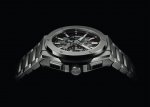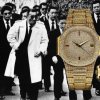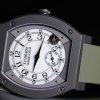All watch owners have a shared and very fundamental expectation from his/her watch: to precisely tell the time. It is needless to say, therefore, we need a timepiece that keeps the time precisely; and a correctly regulated movement for a timepiece keeping the time precisely! Movements have been doing their part, though all of them haven’t been able to show the same success, continuously developing since the arrival of mechanical timepieces in the first half of the 1500s. There remains just a very small problem: of finding the watch that can show the time precisely. Since the emergence of wristwatches came, later on, in the ensuing years, looking at the watch to know the time in the dead of the night was mostly an effort in vain, until the environmental lighting came into being in the sense we understand today. Hence, some other ways and attempts were needed in order to know the time in the darker circumstances. Until Daniel Quare invented, in 1680, a repetition watch which is the ancestor of the complication known today as the minute repeater, the other ways and methods didn’t bear fruits at all. Quare’s watch was telling the time to people by striking at quarters to the hours. And yet, the proliferation of this system was not so easy. In the following century, only the wealthiest families were able to own such repetition watches.

When the date came to 1898, there was a discovery that will deeply affect the following 60 years. Marie Curie and her spouse Pierre Curie discovered a weird element, in blue color, that glowed slightly and dissipated heat though a little. Obtained from the decay of uranium, this element was radium. Radium’s brightness, requiring no triggers, provoked the interest in it. 4 years after the discovery of the element, the paints containing radium had begun to be used in different sectors; and this element had fully entered in the human life. Although radium had the characteristic of glowing without need to any other substance, William J. Hammer, who mixed it with zinc sulfide which is a kind of phosphor, became the pioneer of the fluorescent paint sector. At the same time, by choosing this phosphor, he himself gave radium its well-known bright green color. Later on, radium paints, mixed with different metals, began to glow in different colors. The paints produced were glistening, until the phosphor material inside them was consumed by the radiation emitted by radium. After the phosphor material was consumed up, there remained tenuously the faded blue glow of radium itself. In other words, the paint was becoming dysfunctional. Although this process takes 20-25 years to be realized, radium-based radiation lasts for thousands of years. Since the half-life of the radium element is 1602 years.
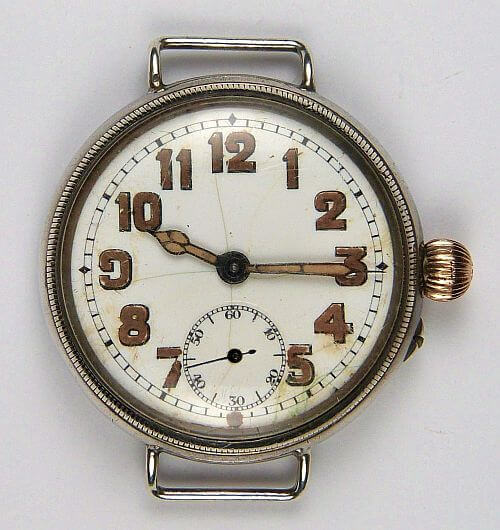
With the outbreak of the World War One in 1914, the need to know the time at night had increased as never before, since the commanders needed to know if the soldiers made the right move at the right time. In accordance with the profound wishes in this direction, the horological industry took action to solve this problem and, in the end, the most fruitful method employed was the use of glowing paints, due to radium they contain, on the watch indexes and hands. Initially produced for the military and similar professional fields, these watches appealed to the civilian population, in a short period of time, with their advantages of all-time readability and radium was applied innumerably in many different watch models. Being in use for a long time even after their emerging harmful effects were fully recognized, radium watches had been crafted for more than 50 years, until their production was totally stopped in 1968.

After the clear understanding of radium’s harmful effects in consequence of some startling incidences and the emergence of public reaction, the sector attempted to search for new ways. Some attempts needed radioactive elements, though not as much as radium. Started to be used after the second half of 1960s, strontium became one of these elements. It was less radioactive and much cheaper than radium, with a shorter half-life than that of radium. In the beginning, strontium was found pretty “healthy” with its half-life of 28 years as compared to radium with a half-life of 1602 years. Since it was less radioactive, it was consuming the phosphor in its paint more slowly and was able to produce glow for years more than radium paints. But it was understood that it may not be kept going with strontium, as its harmful effects such as bone cancer and leukemia had arisen. As a result, Rolex 6542 GMT Master versions were also recalled due to the strontium used in their Bakelite bezels.
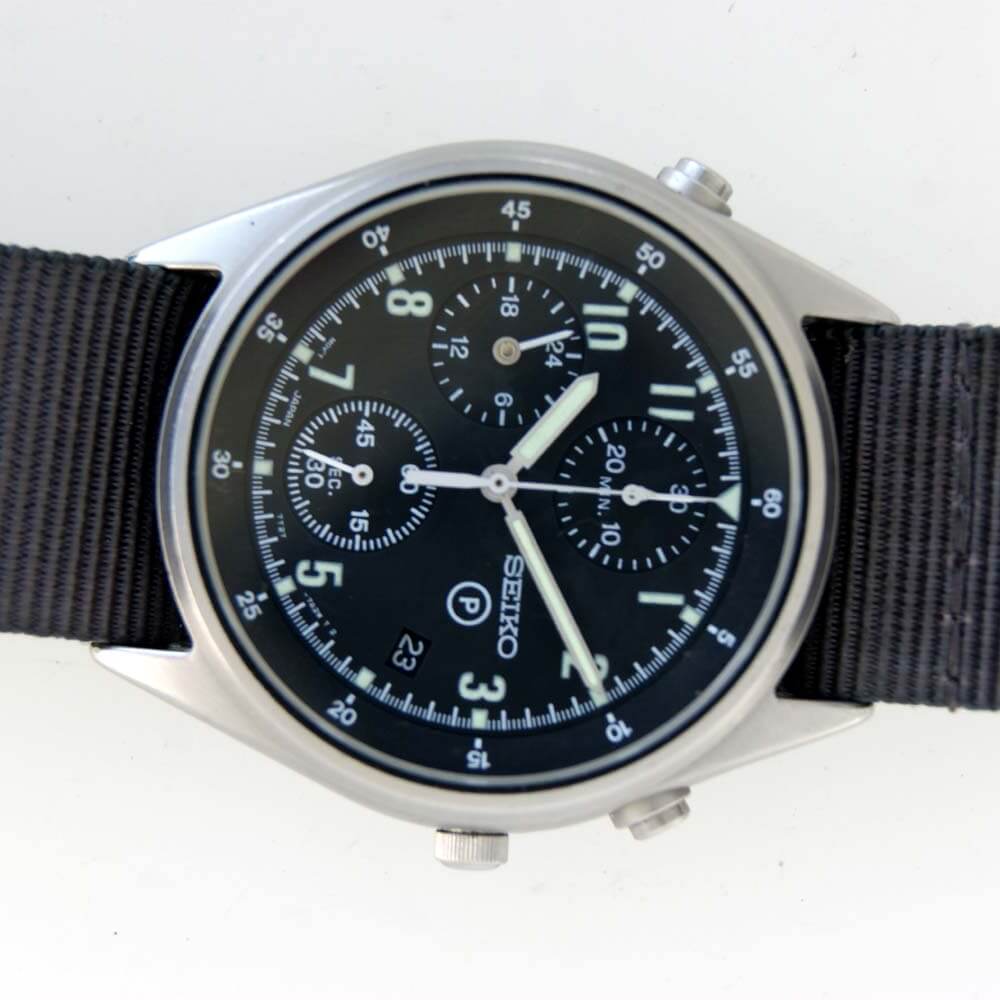
Being almost only used, today, as a source of power for some special medical devices, promethium has also been used, though for a short time, in the watches especially commissioned by the British Ministry of Defense. Promethium, of which the longest-lived isotope has a half-life of 17.7 years, was safer than the sources applied before itself, i.e. radium and strontium, and cheaper than its contemporary counterpart tritium. Moreover, it was able to produce glow brighter than strontium and tritium. But there was a problem: Although promethium-145, its longest-lived isotope, had a half-life of 17.7 years, promethium-147 isotope, used phosphorous in phosphorous paints, had a half-life of 2.5 years and therefore the readability of a watch was lessening in a period shorter than the expected time. Although that period was sufficient for some particular tasks, it wasn’t enough for the civilians. As the phosphorous paint in the military watches would be renewed if required, the civilian population lacked such an opportunity. For instance, it is a known fact that the dial paints of the famous dirty-dozen versions were renewed, at required periods, with promethium or tritium.
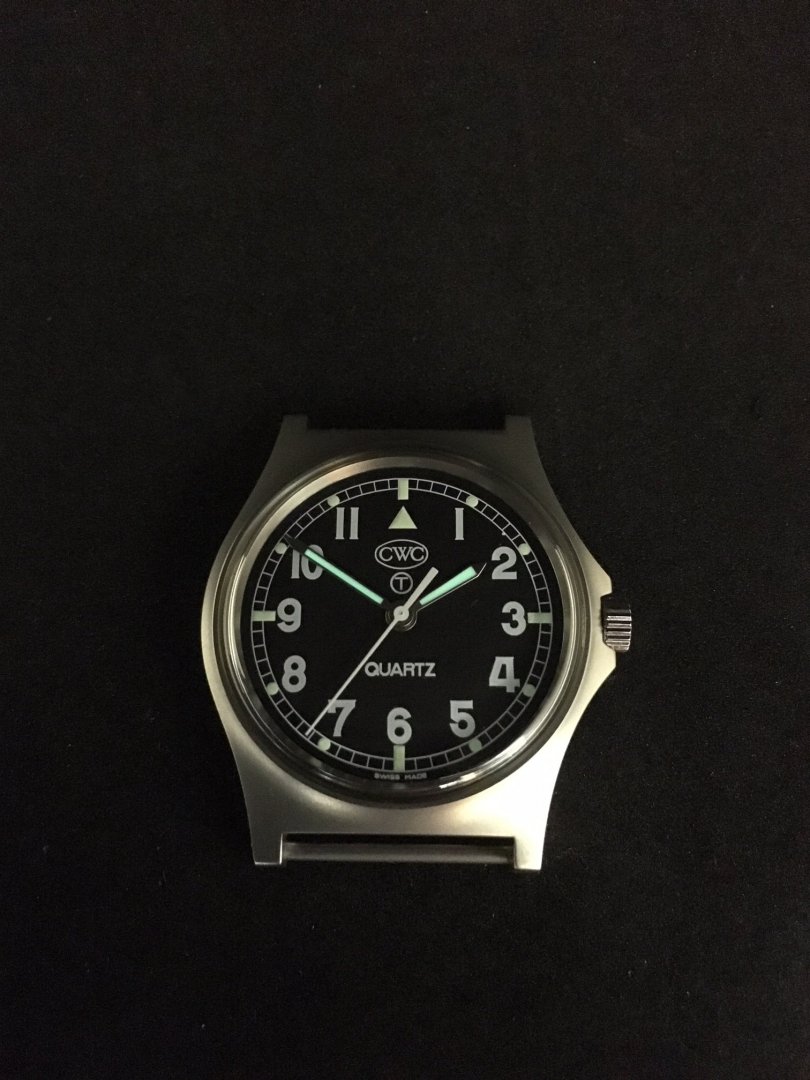
Like promethium, tritium had also been one of the elements applied to make visible the watches, which were initially used in the military tasks and then in the civilian life. It had been frequently used as from the beginning of the 1960s until the end of the 1990s. Providing glow, just like other radioactive paints, by burning zinc sulfide, tritium, with its half-life of 12 years, ensured the paint preserve its brightness for pretty substantial periods of time.
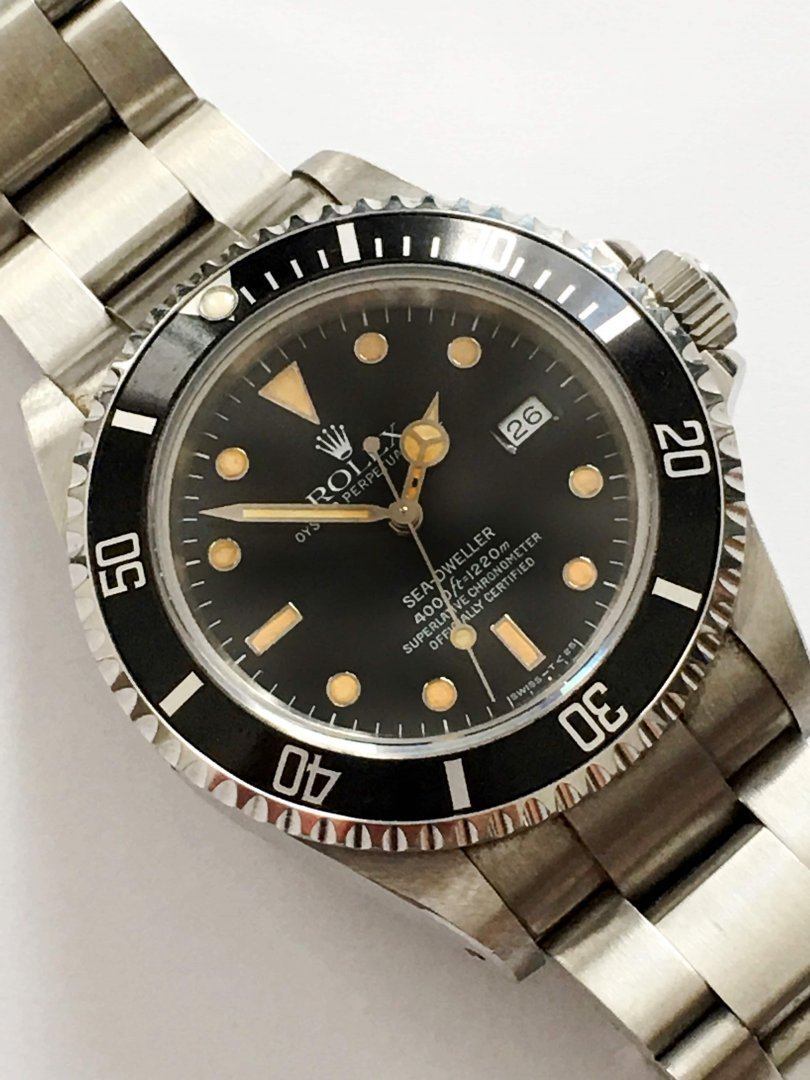
Due to the public pressure rising after the radium disaster and the decisions made by the international committees established, it came to be used in lesser quantities in time. Being symbolized by a letter “T” on the dials in its initial uses, tritium was rarified as to have a remittance level of less than 25mCi and displayed as “T<25”. At a last step, it was reduced as to a remittance level equal to 7.5mCi and described with the “T Swiss Made T” inscription.
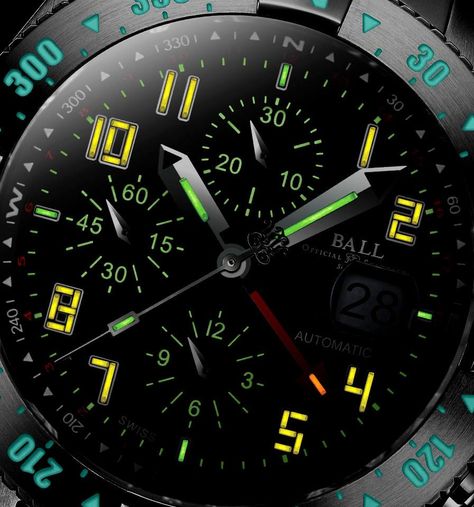
Today, the use of tritium has been going on, though in another way: tritium tubes. Besides offering a really functional view, this method, being employed especially by the Ball brand, produces also a wonderful night view. Although the working principle of the tritium tubes is not so much different than that of the tritium-containing phosphorous paints, the methods differ in their use of tritium, one using it in a solid state and the other in a gaseous state. The tubes are produced from borosilicate glass. The phosphor applied on the interior surface of the glass is excited by tritium and produce small tubes with different colors, requiring no light source to radiate. Though still a radioactive source, this effect is minimized to the least level since it is encapsulated in the glass tubes.
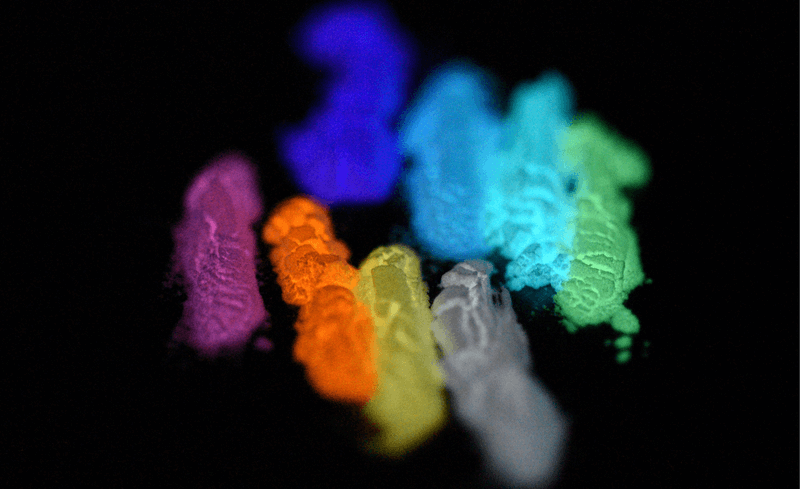
Harmful or not but functional in the end, after all these methods, when it came to the first half of the 1990s, a groundbreaking invention was realized in Japan: Luminova! Producing gloss paint, since 1941, especially for the dials of military watches in Japan, Nemoto&Co. had used, in time, all types of gloss paint in its productions on and after the radium era and, in 1993, developed the Luminova technology. This new material was not only problem-free in terms of radiation but also offering a brighter night view as compared to the old radioactive paints containing zinc sulfide. Luminova works with the strontium aluminate, which is a strong phosphor, absorbing only the light it has been exposed to and then re-emitting it. Being applied almost in all wristwatches manufactured today, excluding some special models, Luminova has been termed by different brands in different names with slight differences in its formula. LumiBrite by Seiko, Super-Luminova by many brands of a Swiss origin and Chromalite by Rolex, though it doesn’t officially acknowledge.
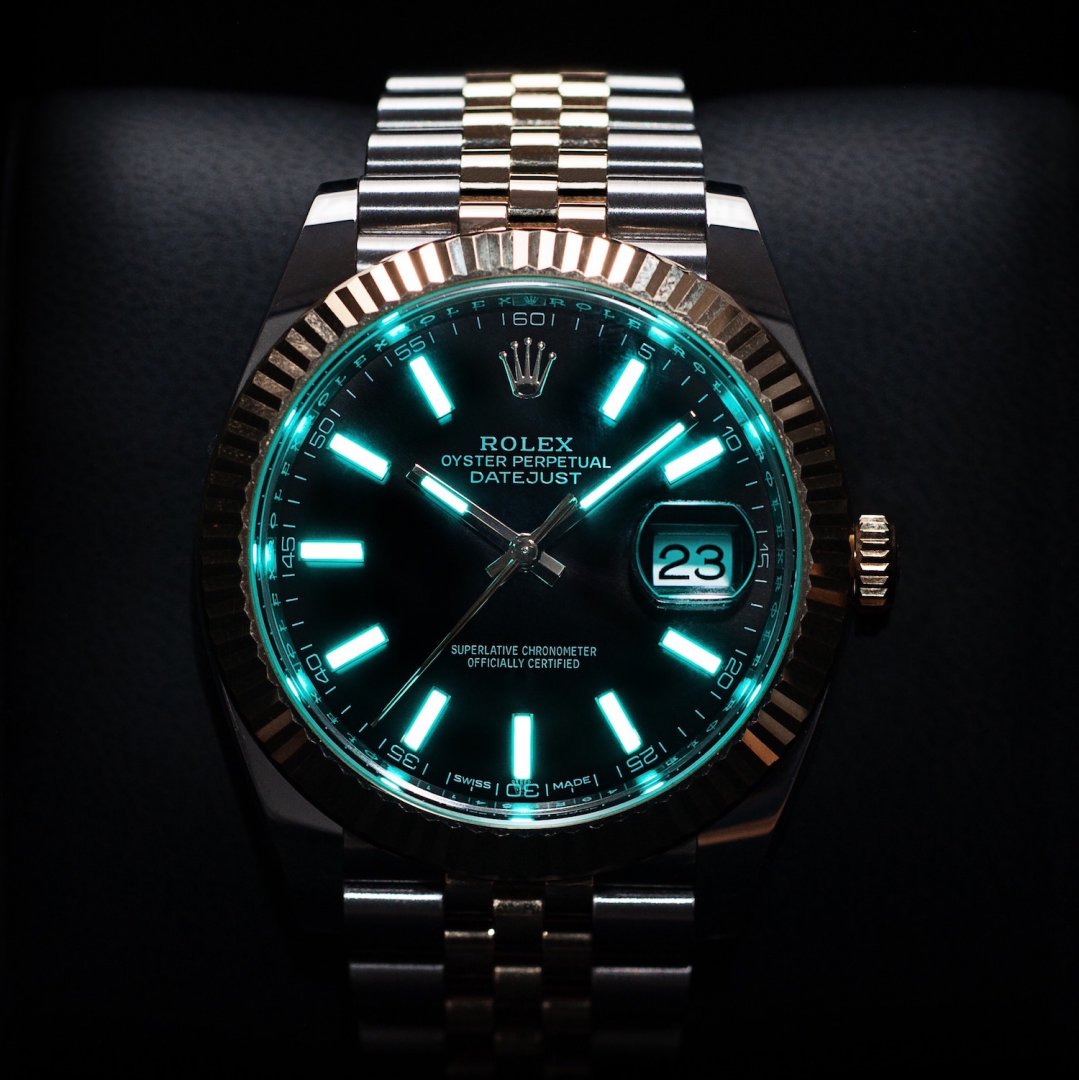
In this article in which we shortly mentioned the solutions found and employed for the sake of illuming the watch dials, without applying electricity even in the times when it was available, I have tried to briefly summarize a period of 80 years, moving from radium towards Luminova times. Being inherited from the first glowing attempts, the watches with radioactive paint such as radium are now a part of history, and even though they have given their places to Luminova watches in today’s context, they have been bought or kept or used by many watch lovers, notably by the collectors. Although a cautious use or a limited collection is seen harmless in general, it must be never forgotten that it contains a radioactive material that will continue to emit radiation within some 1000 years ahead.

